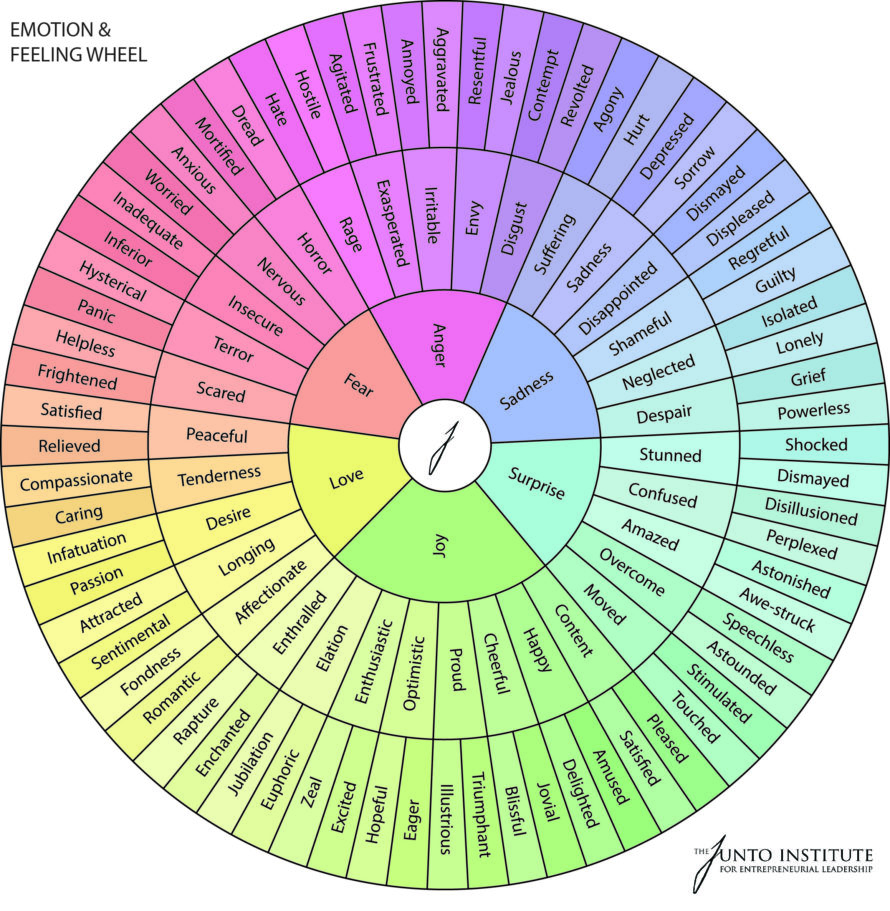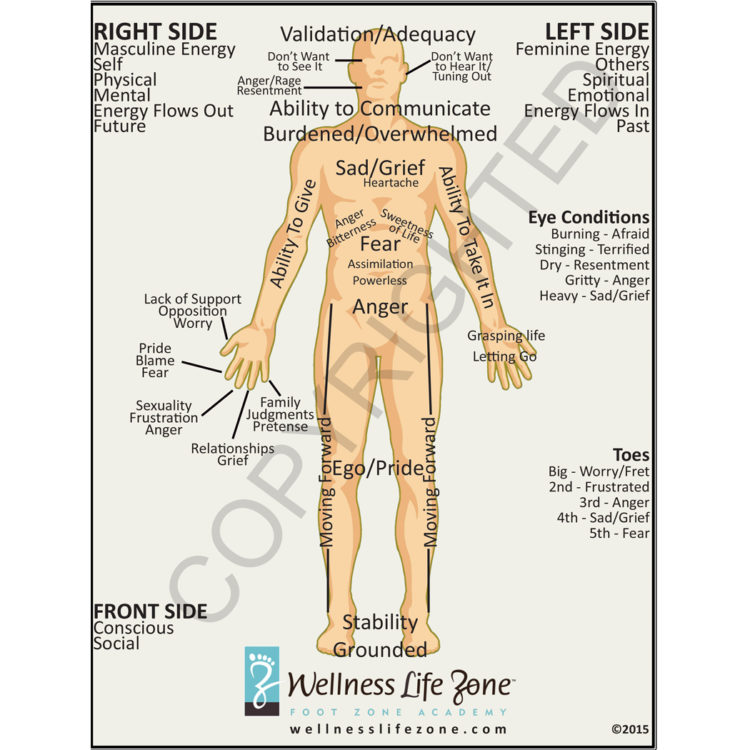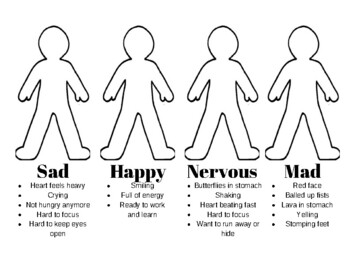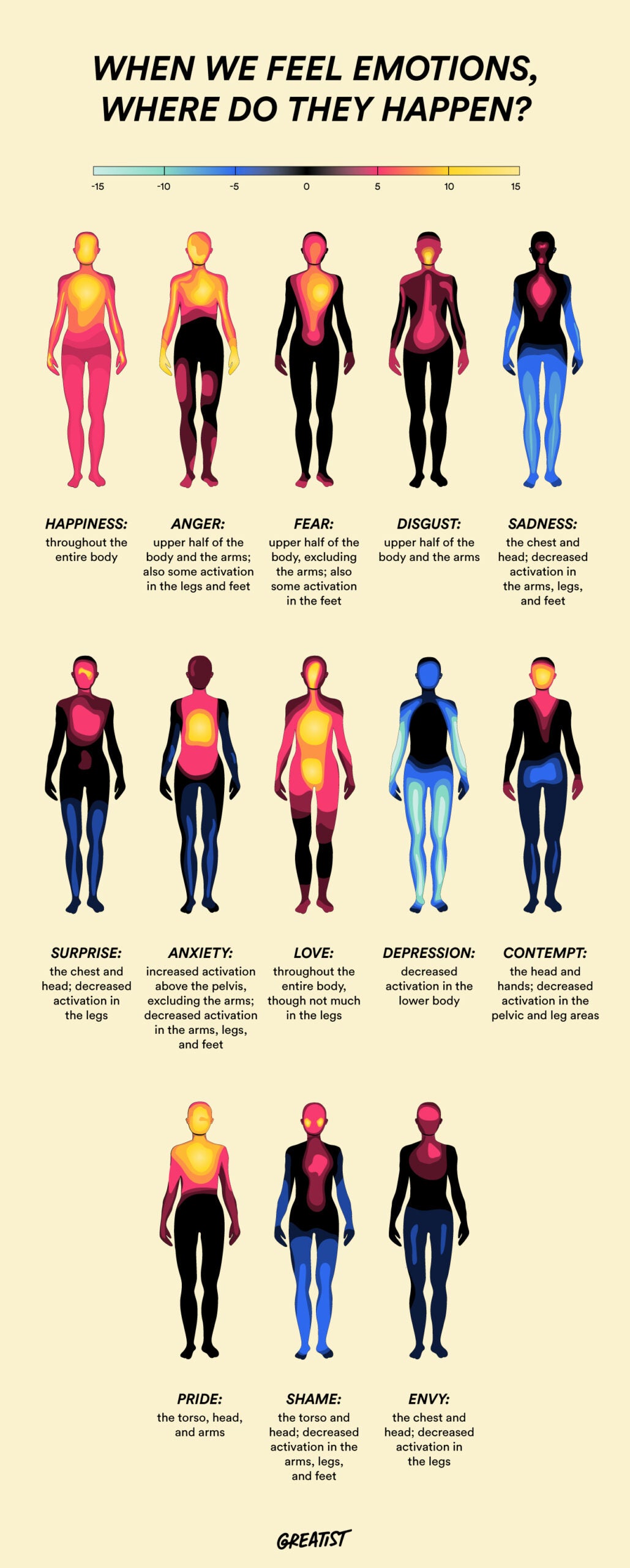Have you ever wondered how emotions are mapped in our bodies? It turns out that these bodily maps of emotions are culturally universal. A fascinating study has revealed that our bodies respond to various emotions in similar ways, regardless of our cultural background. Let’s explore this intriguing topic and discover how emotions manifest in our bodies.
Figure 1: Bodily Maps of Emotions
 One of the most fascinating images that depicts these bodily maps of emotions is Figure 1. This image highlights how different emotions are associated with specific bodily sensations. For example, anger is often felt as warmth and tension in the head and chest, while happiness is associated with a warm and tingly feeling in the chest and abdomen.
One of the most fascinating images that depicts these bodily maps of emotions is Figure 1. This image highlights how different emotions are associated with specific bodily sensations. For example, anger is often felt as warmth and tension in the head and chest, while happiness is associated with a warm and tingly feeling in the chest and abdomen.
Embracing Uncomfortable Feelings
 Uncomfortable feelings are a natural part of life, and it’s important to make peace with them. The Reembody Method™ provides three effective ways to embrace and navigate these uncomfortable emotions. By acknowledging and accepting these feelings, we can start to cultivate a healthier emotional well-being.
Uncomfortable feelings are a natural part of life, and it’s important to make peace with them. The Reembody Method™ provides three effective ways to embrace and navigate these uncomfortable emotions. By acknowledging and accepting these feelings, we can start to cultivate a healthier emotional well-being.
Emotion Man Chart
 The Emotion Man Chart is a helpful tool that visually represents the connection between emotions and our bodily sensations. It allows us to explore how different emotions manifest in various parts of our bodies. This chart serves as a valuable resource for understanding and managing our emotional experiences.
The Emotion Man Chart is a helpful tool that visually represents the connection between emotions and our bodily sensations. It allows us to explore how different emotions manifest in various parts of our bodies. This chart serves as a valuable resource for understanding and managing our emotional experiences.
Body Mapping Emotions Activity
 Engaging in the Body Mapping Emotions Activity can be an enlightening and empowering experience. This activity encourages individuals to identify and map their emotions on a body outline. By doing so, we can gain deeper insights into the physical sensations associated with our emotional states.
Engaging in the Body Mapping Emotions Activity can be an enlightening and empowering experience. This activity encourages individuals to identify and map their emotions on a body outline. By doing so, we can gain deeper insights into the physical sensations associated with our emotional states.
Where Emotions Are Felt In the Body
 Research has shown that emotions are felt in specific areas of the body. According to this research, sadness is often felt as a heavy sensation in the heart and chest, while fear may manifest as a knot in the stomach. Understanding where emotions are felt can help us better identify and manage our emotional well-being.
Research has shown that emotions are felt in specific areas of the body. According to this research, sadness is often felt as a heavy sensation in the heart and chest, while fear may manifest as a knot in the stomach. Understanding where emotions are felt can help us better identify and manage our emotional well-being.
Combined Body Map: Anger and Emotions

Emotions in Our Bodies Activity
 The “Emotions in Our Bodies” activity is a wonderful intervention designed to explore the connection between emotions and physical sensations. This activity works best when we take the time to map and identify our emotions within our own bodies. It can be a powerful tool for enhancing self-awareness and emotional well-being.
The “Emotions in Our Bodies” activity is a wonderful intervention designed to explore the connection between emotions and physical sensations. This activity works best when we take the time to map and identify our emotions within our own bodies. It can be a powerful tool for enhancing self-awareness and emotional well-being.
Mapping Your Emotions In Your Body
 Mapping your emotions in your body is an insightful exercise that allows you to deepen your understanding of the mind-body connection. By reflecting on how specific emotions manifest in your body, you can become more attuned to your emotional experiences and develop strategies for emotional self-care.
Mapping your emotions in your body is an insightful exercise that allows you to deepen your understanding of the mind-body connection. By reflecting on how specific emotions manifest in your body, you can become more attuned to your emotional experiences and develop strategies for emotional self-care.
Pin on FYI
 This informative pin provides a visual representation of how emotions can be mapped onto the body. By recognizing the physical sensations associated with different emotions, we can gain valuable insights into our emotional well-being and foster a greater sense of self-awareness.
This informative pin provides a visual representation of how emotions can be mapped onto the body. By recognizing the physical sensations associated with different emotions, we can gain valuable insights into our emotional well-being and foster a greater sense of self-awareness.
Alternative Health Diagnosing: Body Map Front of Body
 Alternative health practices often utilize body maps to diagnose and understand imbalances within the body. This image shows an alternative health diagnosing chart, highlighting the mapped areas on the front of the body. By recognizing the connections between emotions and bodily sensations, alternative health practitioners can offer holistic approaches to healing and well-being.
Alternative health practices often utilize body maps to diagnose and understand imbalances within the body. This image shows an alternative health diagnosing chart, highlighting the mapped areas on the front of the body. By recognizing the connections between emotions and bodily sensations, alternative health practitioners can offer holistic approaches to healing and well-being.
These diverse images shed light on the universally experienced connection between emotions and the physical sensations they elicit in our bodies. Exploring these bodily maps can be an enlightening journey towards better self-awareness and emotional well-being. By understanding how our emotions manifest in our bodies, we can become more attuned to our emotional experiences and cultivate a healthier relationship with our feelings.